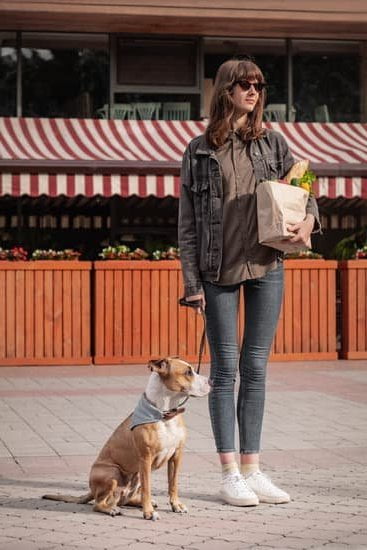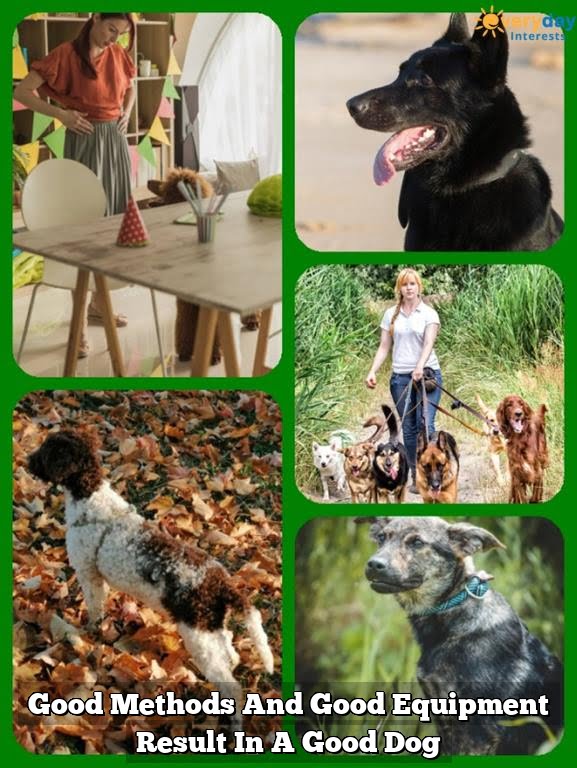Guard dogs play a crucial role in maintaining security and protecting homes, businesses, and individuals. However, simply owning a dog does not automatically guarantee its effectiveness as a guard dog. Proper training is essential to develop the skills and behaviors necessary for a reliable and effective guard dog. In this article, we will explore the process of training a good guard dog, providing you with valuable insights and techniques to ensure success.
Training a good guard dog goes beyond teaching basic obedience commands. It involves instilling discipline, developing strong protective instincts, and enhancing guarding skills and response. By investing time and effort into training your dog, you can cultivate a loyal and obedient companion who excels in their role as a guardian.
This article will guide you through the entire process of training a good guard dog – from choosing an ideal breed for your specific needs to troubleshooting common challenges that may arise during the training process. With comprehensive sections on establishing trust, basic obedience training, socialization, advanced techniques, handling and management, maintaining health, and overcoming obstacles – you’ll have all the tools you need to successfully train your four-legged protector.
By following these expert tips and techniques detailed throughout this article, you will not only create a safe environment for yourself but also experience the benefits of having a well-trained guard dog by your side – peace of mind knowing that your property is secure and protected at all times.
The Ideal Breeds for Guard Dog Training
When it comes to training a good guard dog, choosing the right breed is crucial. Not all dogs have the natural instincts and characteristics necessary to excel in guard dog training. Therefore, it is important to select a breed that is known for its protective nature, loyalty, intelligence, and physical strength. Here are some ideal breeds that are commonly used for guard dog training:
- German Shepherd: German Shepherds are one of the most popular choices for guard dog training due to their intelligence, strong protective instincts, and loyalty towards their owners. They are known for their ability to quickly learn commands and their willingness to please their handlers.
- Doberman Pinscher: Dobermans have a reputation for being loyal and highly trainable. They possess excellent endurance, strength, and agility which makes them suitable for guarding properties or accompanying security personnel. Dobermans also have a natural instinct to protect their family.
- Rottweiler: Rottweilers are powerful dogs with a calm disposition. They are naturally protective and loyal towards their family members. Despite their intimidating appearance, Rottweilers can be gentle and affectionate when properly trained and socialized.
- Belgian Malinois: Belgian Malinois are known for their high energy levels, intelligence, and trainability. These dogs excel in obedience training as well as specialized tasks such as search-and-rescue or police work. Their natural protective instincts coupled with agility make them ideal candidates for guard dog training.
- Bullmastiff: Bullmastiffs are large dogs with a strong build that makes them an imposing presence alone; however they also possess a gentle temperament when not provoked which results in a balanced guard dog personality when trained correctly.
It is important to note that while these breeds may be ideal for guard dog training, individual temperaments may still vary within each breed. Therefore, it is essential to evaluate each potential canine companion on an individual basis before making a final decision. Additionally, it is recommended to consult with a professional dog trainer or experienced breeder who can help guide you in selecting the right breed for your specific needs and lifestyle.
Setting the Foundation
One of the key components to successfully training a good guard dog is establishing trust and bonding with your canine companion. Building a strong foundation in the early stages of training will not only help your dog feel secure, but it will also create a solid relationship between you and your furry friend.
To establish trust and bonding, it is crucial to spend quality time with your dog. This includes regular one-on-one interactions such as playtime, grooming sessions, and simply being present with your dog. These activities will promote positive associations and strengthen the bond between you both.
Another important aspect of setting the foundation is creating clear communication with your dog. Dogs are highly observant animals and pick up on subtle cues from their owners. By using consistent verbal commands paired with visual cues, you can effectively convey what you expect from your dog during training sessions.
Additionally, it is essential to prioritize positive reinforcement during this stage of training. Rewarding desired behaviors through treats, praise, or play encourages your dog to repeat those behaviors in the future. This positive approach reinforces the idea that training sessions are a pleasant experience for both you and your dog.
In order to track progress in establishing trust and bonding with your dog, it can be helpful to keep a training log documenting each session’s goals achieved or areas needing improvement. By tracking this data over time, you can assess how effective your techniques are and make necessary adjustments if needed.
| Aspect | Description |
|---|---|
| Quality Time | Spend regular one-on-one time with your dog through activities like playtime or grooming sessions. |
| Clear Communication | Use consistent verbal commands coupled with visual cues to effectively communicate with your dog. |
| Positive Reinforcement | Reward desired behaviors with treats, praise, or play to encourage your dog to repeat those behaviors. |
Basic Obedience Training
Basic obedience training is a crucial step in establishing control and discipline for a good guard dog. This training not only helps to create a well-behaved dog, but it also lays the foundation for future advanced training. By teaching your dog basic commands, you are setting boundaries and asserting your role as the leader.
The Importance of Basic Commands
In order to have control over your guard dog, they need to understand and respond to basic commands. These commands include sit, stay, come, lie down, and heel. Teaching these commands will help you manage your dog’s behavior in different situations and ensure that they follow instructions promptly.
Positive Reinforcement Training
Positive reinforcement is a highly effective technique when it comes to obedience training. This method involves rewarding your dog with treats, praise, or play whenever they correctly execute a command. By associating positive experiences with following commands, your dog will be motivated to continue behaving appropriately.
It is important to remember that consistency is key during obedience training. Use the same verbal cues and hand signals consistently so that your dog can understand what is expected of them. Additionally, start training sessions in a quiet and distraction-free environment before gradually introducing distractions to challenge your dog’s focus and obedience skills.
Addressing Behavioral Issues
During basic obedience training, it is common to encounter behavioral issues such as jumping or pulling on the leash. It is important to address these issues promptly to prevent them from becoming ingrained habits. For example, if your guard dog jumps on people when greeting them, use the “off” command combined with positive reinforcement when they keep all four paws on the ground.
If you find yourself struggling with addressing specific behavioral issues or if basic obedience training becomes challenging, seeking professional help from a certified dog trainer can be beneficial. They can provide guidance tailored to your specific needs and help you overcome any obstacles you may face during the training process.
By focusing on basic obedience training, you are establishing control and discipline in your guard dog. This foundation will be vital for advanced training techniques that enhance their guarding skills and response. Remember to be patient, consistent, and always use positive reinforcement to ensure a well-trained and obedient guard dog.
Developing Strong Alertness and Protective Instincts
Guard dogs are trained to protect and guard their territory, property, or individuals. It is important to develop their alertness and protective instincts through specific training techniques. By teaching guarding behaviors, you can ensure that your guard dog will respond appropriately to potential threats or intruders.
Understanding the Purpose of Guarding Behaviors
Before diving into teaching guarding behaviors, it is essential to understand their purpose. Guarding behaviors include actions such as barking, growling, standing tall and alert, and maintaining a strong presence. These behaviors serve as warning signs to deter intruders and indicate the dog’s readiness to defend its territory or loved ones if necessary.
Training with Positive Reinforcement
Positive reinforcement is crucial in teaching guarding behaviors effectively. By using rewards such as treats, praise, or playtime whenever your dog exhibits desired guarding behaviors, you can establish a positive association between those actions and positive outcomes. When your dog barks at strangers approaching your property or exhibits other signs of guarding behavior on command, reward them promptly to reinforce the behavior.
Introducing Controlled Scenarios
To help your guard dog develop strong alertness and protective instincts, it is important to gradually introduce controlled scenarios that simulate potential threats or intrusions. Start with simple exercises like having another person approach the boundaries of your property while ensuring that both you and your dog feel safe and secure. As they become more comfortable in these scenarios, gradually increase the difficulty level by incorporating various stimuli such as unfamiliar noises or objects.
During training sessions involving simulated threats, guide your guard dog through the appropriate response by using cues such as “bark” or “watch.” As soon as they respond correctly by exhibiting proper guarding behavior, immediately provide them with positive reinforcement. Remember to maintain a calm but assertive demeanor throughout the training process to ensure clear communication with your dog.
By following these techniques, you can effectively develop your guard dog’s alertness and protective instincts. However, it is crucial to remember that guard dogs should be well-socialized and properly trained to distinguish between real threats and harmless situations. Regular practice, consistency, and patience are key when teaching guarding behaviors to your canine companion.
Socialization
Socialization plays a crucial role in training a good guard dog. By exposing your dog to different environments and people, you are teaching them how to respond appropriately in various situations and helping them become well-rounded and adaptable. This section will discuss the importance of socialization in guard dog training and provide tips on how to effectively expose your dog to new experiences.
Socializing your guard dog is important for several reasons. Firstly, it helps them develop confidence and reduces anxiety or fear towards unfamiliar environments or people. A confident guard dog is more likely to effectively carry out their duties without being overly aggressive or reactive.
Secondly, socialization teaches your dog how to differentiate between friend and foe, enabling them to accurately assess potential threats while remaining calm around friendly individuals. Lastly, exposure to different environments and people helps prevent behavioral issues like aggression or fearfulness that can arise from lack of socialization.
To properly socialize your guard dog, start by gradually introducing them to new environments and situations. Begin with low-stress settings such as quiet parks or empty parking lots before moving on to busier areas.
Encourage positive interactions with other dogs and friendly strangers, rewarding your dog with treats or praise for calm behavior. It is also important to expose your guard dog to different types of people including men, women, children, as well as individuals wearing hats, glasses, or uniforms.
In addition to supervised socialization outings, consider enrolling your guard dog in group obedience classes or arranging playdates with other well-behaved dogs. These activities provide controlled opportunities for social interaction and further reinforce obedience skills learned through their training. Remember that consistency is key when it comes to socialization – regular exposure to various environments and individuals will help ensure that your guard dog remains confident, composed, and capable of carrying out their duties effectively.
Advanced Training Techniques
Once your guard dog has completed basic obedience training and developed a foundation of trust and discipline, it is time to take their skills to the next level. Advanced training techniques are essential for enhancing their guarding skills and response in various situations. Here are some strategies you can use to further enhance your guard dog’s abilities:
- Scent Detection Training: Teaching your guard dog to recognize specific scents can be invaluable in certain situations. This type of training is commonly used in search and rescue missions or detecting illegal substances. By utilizing their strong sense of smell, you can train your dog to identify specific scents associated with threats or dangerous objects.
- Aggression Control Training: While it is important for a guard dog to display protective instincts, it is equally crucial for them to exhibit control over their aggression. Advanced training techniques focus on teaching your dog when it is appropriate to display protective behaviors and when they should remain calm and non-threatening. This includes training them to respond only when given a specific command or cue.
- Tactical Training: In some cases, guard dogs may be required to work alongside security personnel or law enforcement officers in high-risk situations. Tactical training involves teaching your dog how to follow commands under stressful conditions, navigate obstacles, apprehend suspects, or provide support during operations.
It is important to note that advanced training techniques should always be conducted under the guidance of an experienced professional who specializes in working with guard dogs. These trainers have the knowledge and expertise to tailor the training program based on the specific needs of your dog and desired outcomes.
| Training Technique | Description |
|---|---|
| Scent Detection Training | Teaching your guard dog to recognize specific scents associated with threats. |
| Aggression Control Training | Training your dog to exhibit control over their protective instincts and aggression. |
| Tactical Training | Preparing your guard dog for high-risk situations, such as working alongside security personnel or law enforcement officers. |
Proper Handling and Management of a Trained Guard Dog
Once you have successfully trained your dog to become a good guard dog, it is essential to understand the importance of responsible ownership and proper handling. This section will provide guidance on how to handle and manage your trained guard dog effectively.
Consistent Rules and Boundaries
Maintaining consistent rules and boundaries is crucial for responsible ownership of a trained guard dog. Establishing clear expectations will help your dog understand their role as a protector and prevent any potential behavior issues. Set limits regarding access to certain areas in your home or yard, rules about interactions with strangers, and guidelines for appropriate behavior during walks or outings. Consistency in training methods, commands, and overall management will reinforce the training your guard dog has received.
Securely Controlling Your Dog
As a responsible owner of a trained guard dog, it is essential to securely control your canine companion at all times. Make sure that you have secure fencing or enclosures both indoors and outdoors to prevent any accidental escapes or encounters with unfamiliar individuals. Additionally, when taking your guard dog out in public, always use a sturdy leash and harness or collar designed for strong dogs. Proper control ensures the safety of both your dog and others.
Supervision and Monitoring
Supervision plays a vital role in managing a trained guard dog effectively. Keeping an eye on their behavior allows you to intervene if necessary and address any issues promptly. Regularly monitor your dog’s interactions with people, animals, and surroundings to ensure they maintain their obedience training and guarding instincts without becoming overly aggressive or anxious.
It is also important to give your trained guard dog plenty of mental stimulation through regular exercise such as walks, runs, or agility training sessions. Mental stimulation can be achieved through interactive toys that require problem-solving skills or engaging in obedience tasks. Remember to provide a balanced and nutritious diet to support the physical health and well-being of your guard dog.
By responsibly handling and managing your trained guard dog, you can ensure the safety of yourself, others, and your loyal companion. Taking these measures will allow you to fully enjoy the benefits of having a well-trained guard dog while maintaining a harmonious environment for all.
Maintaining Physical and Mental Health
Guard dogs not only require proper training to excel in their duties, but they also need to maintain their physical and mental health to function at their best. This section will focus on the importance of exercise, nutrition, and mental stimulation for a well-balanced guard dog.
1. Exercise: Guard dogs are typically high-energy breeds that require regular exercise to keep them healthy and prevent behavioral issues caused by pent-up energy. Daily physical activity helps to release excess energy, reduces stress, and keeps them mentally stimulated. A mix of aerobic exercises like running or playing fetch, and strength-building exercises such as agility training or tug-of-war, can help keep your guard dog fit and in shape.
- Take your dog for daily walks or jogs.
- Provide opportunities for them to play in a secure and spacious area.
- Engage in interactive games such as hide-and-seek or frisbee.
2. Nutrition: A well-balanced diet is vital for the overall health and vitality of a guard dog. Proper nutrition ensures they have the necessary nutrients to support their physical activities and maintain muscle mass.
Consult with a veterinarian to determine the appropriate diet for your breed of guard dog based on their age, size, and specific dietary needs. Consider feeding them high-quality commercial dog food or a balanced home-cooked diet that includes lean proteins, vegetables, fruits, and whole grains.
- Avoid feeding your guard dog table scraps or foods that can be harmful to dogs.
- Provide fresh water at all times.
- If necessary, consider adding supplements recommended by your veterinarian.
3. Mental Stimulation: Guard dogs need more than just physical exercise; they also require mental stimulation to prevent boredom and promote a well-balanced temperament. Engaging your dog in various mental activities and games helps to keep their minds sharp and focused. This can include puzzle toys, obedience training sessions, scent work, or interactive playtime with their owner.
- Introduce new toys or rotate existing ones to prevent monotony.
- Teach them new commands or tricks to challenge their intelligence.
- Consider enrolling them in advanced training classes or workshops.
By maintaining proper exercise, nutrition, and mental stimulation for your guard dog, you will not only ensure their physical well-being but also promote a healthy mindset that is essential for carrying out their duties effectively. Incorporating these practices into your guard dog’s routine will help establish a strong foundation for their overall wellness and longevity.
Troubleshooting Common Challenges in Guard Dog Training
Understanding the Importance of Consistency in Guard Dog Training
Consistency is key when it comes to training a guard dog. Dogs thrive on routine and predictability, so it is crucial to establish clear rules and boundaries from the beginning. Inconsistent training methods or mixed signals can confuse your dog and hinder their progress. To ensure successful training, it is essential to stay consistent in your commands, expectations, and rewards.
One common challenge in guard dog training is maintaining consistency across different handlers. If multiple people are involved in the handling and training of your guard dog, it is crucial to establish uniformity in commands and techniques. This can be achieved by organizing regular training sessions together where everyone follows the same protocols.
Another challenge that often arises is inconsistency in enforcement. It’s important that you follow through with consequences or rewards every time your dog exhibits a desired behavior or breaks a rule. Giving in to undesirable behaviors or only occasionally rewarding good behaviors can confuse your dog and undermine their learning process.
Overcoming Obstacles during Guard Dog Training
Guard dog training may involve dealing with various obstacles along the way. One obstacle that many owners face is fear or aggression towards strangers or other dogs. If your guard dog displays signs of aggression, seek help from a professional trainer who specializes in working with protective breeds. They can guide you on how to safely train your dog to differentiate between threats and non-threatening situations.
Separation anxiety is another common challenge among guard dogs who become overly attached to their owners. This can result in unwanted behaviors such as excessive barking, destructive chewing, or attempting to escape when left alone. Gradual desensitization techniques, crate training, and providing mental stimulation through interactive toys can help alleviate separation anxiety.
Additionally, distractions during training sessions can impede progress. Guard dogs are naturally alert and may get easily distracted by sounds or movement around them. Start training in a controlled and quiet environment, gradually increasing the level of distractions as your dog becomes more focused. Consistency and patience during these distractions will help reinforce their training.
Staying Positive and Patient
It is important to approach guard dog training with a positive attitude and plenty of patience. Dogs will have good days and bad days, just like humans do. If your dog seems to be struggling with certain behaviors or concepts, avoid getting frustrated or losing your temper. Negative reactions can create fear or confusion in your dog, hindering their progress even further.
Sometimes, progress may seem slow or inconsistent. Remember that each dog is unique, and some dogs may take longer to grasp certain concepts than others. Stay patient and keep practicing consistently. Celebrate even the small achievements along the way, as they contribute to the overall growth of your guard dog’s skills.
By staying consistent in your training methods and techniques, overcoming obstacles with professional help when necessary, and maintaining a positive and patient mindset, you can effectively troubleshoot common challenges and continue progressing towards having a well-trained guard dog.
Conclusion
In conclusion, training a good guard dog requires time, consistency, and patience. However, the benefits of owning a well-trained guard dog are numerous. A properly trained guard dog can provide you with a sense of security and peace of mind knowing that your property and loved ones are protected. Additionally, a well-trained guard dog can be a loyal companion and a valued member of the family.
Through this article, we have discussed various aspects of training a good guard dog, from choosing the right breed to troubleshooting common challenges. We have emphasized the importance of establishing trust and bonding with your dog, as well as developing their alertness and protective instincts. Socialization and advanced training techniques have also been discussed as essential components of guard dog training.
Furthermore, proper handling and management are crucial for responsible ownership of a trained guard dog. This involves ensuring their physical and mental health through exercise, nutrition, and mental stimulation. By maintaining their overall well-being, you can maximize their potential as an effective guard dog.
Frequently Asked Questions
How do I train my dog to be a security guard?
Training a dog to be a security guard requires specific steps and consistent training techniques. Firstly, it is important to establish basic obedience commands such as sit, stay, and come. This forms the foundation for further training. Next, focus on teaching your dog to bark on command as a response to potential threats or intruders.
Reinforce this behavior by rewarding them with treats or praise. Additionally, exposing your dog to various environments and people will help them differentiate between normal situations and potential dangers. Consider enrolling your dog in professional guard dog training courses for specialized guidance. It is crucial to remember that a well-trained security guard dog should also have a strong bond with its owner or handler.
Are guard dogs easy to train?
While the ease of training guard dogs can vary depending on individual temperaments, overall they tend to be quite trainable due to their working instincts and intelligence. Breeds commonly chosen as guard dogs, such as German Shepherds or Doberman Pinschers, possess qualities like loyalty, alertness, and high trainability.
However, it is essential for prospective owners to understand that training a guard dog requires commitment and consistency. Regular practice sessions along with proper socialization are key factors in ensuring successful training results.
How long does it take to fully train a guard dog?
The duration required for fully training a guard dog can vary depending on several factors including age, breed, previous training experience, and the specific tasks required of them. On average, comprehensive guard dog training usually takes around six months to one year or more before the desired level of proficiency is attained.
During this time period, structured training sessions need to take place regularly in order to reinforce skills and behaviors effectively. The complexity of the tasks assigned must be taken into account as advanced abilities like tracking scents or apprehending intruders may require additional time for mastery.

Welcome to the blog! I am a professional dog trainer and have been working with dogs for many years. In this blog, I will be discussing various topics related to dog training, including tips, tricks, and advice. I hope you find this information helpful and informative. Thanks for reading!





